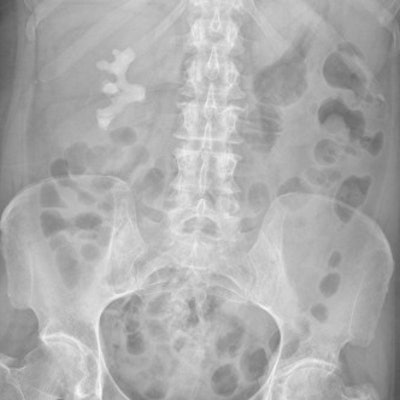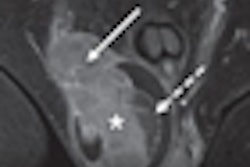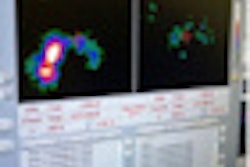
Early exposures to medical imaging can increase men's risk of developing testicular cancer by almost 60%, according to a study published November 11 in PLOS One. The findings highlight the need for shielding for men and boys during imaging exams.
"The steady rise in testicular germ cell tumor cases over the past three or four decades suggests there is an environmental exposure risk at play, but no definitive risk factor has ever been identified," said senior author Dr. Katherine Nathanson the University of Pennsylvania in a statement released by the university. "Our data suggest that the increased use of diagnostic radiation below the waist in men over that same time may contribute to the increase in incidence."
Testicular germ cell tumor (TGCT) is the "most common cancer in the U.S. and Europe in men and boys between the ages of 15 and 45," the group noted, and its occurrence has increased from about three out of 100,000 patients in 1975 to six out of 100,000 now. Almost 10,000 cases will be identified by the end of 2020, the team wrote.
Exposure to diagnostic radiation is a known risk factor for TGCT, and x-ray and CT exams are considered to be of concern in this regard. Lead study author Dr. Kevin Nead and colleagues investigated the impact of diagnostic radiation on men's risk for TGCT through a study that included 1,246 men between the ages of 18 and 55 with and without the disease. (Nead was at the University of Pennsylvania when the study was conducted and is now at MD Anderson Cancer Center in Houston.)
Participants completed a questionnaire regarding medical imaging and known and suspected risk factors for testicular cancer, including the location of previous imaging and number of exposures before they were diagnosed with TGCT. The researchers also collected tumor samples.
The survey found that those participants who had at least three prior x-ray exposures (such as colon x-ray) and/or CT below the waist had a 59% increased risk of testicular cancer compared with men who did not have such exposure. It also showed that this risk was higher for those survey respondents who were exposed to radiation during the first 10 years of their lives compared with those first exposed at the age of 18 or older.
The study results highlight the need to carefully monitor radiation exposure in men and boys, according to the researchers.
"If our results are validated, efforts to reduce medically unnecessary and avoidable testicular exposure should be considered, in part through efforts to reduce radiation dose and optimize shielding practices when appropriate," the authors wrote.
The findings come as some hospitals and imaging centers are rethinking the use of lead shielding on patients. Some medical physicists and clinicians have questioned the value of the practice, and the American Association of Physicists in Medicine (AAPM) in April 2019 issued a statement advising that patient fetal and gonadal shielding should be discontinued as a routine practice. The AAPM cited interference caused by shielding on x-rays and the potential for interfering with automatic exposure control as the reason for its recommendation.





















